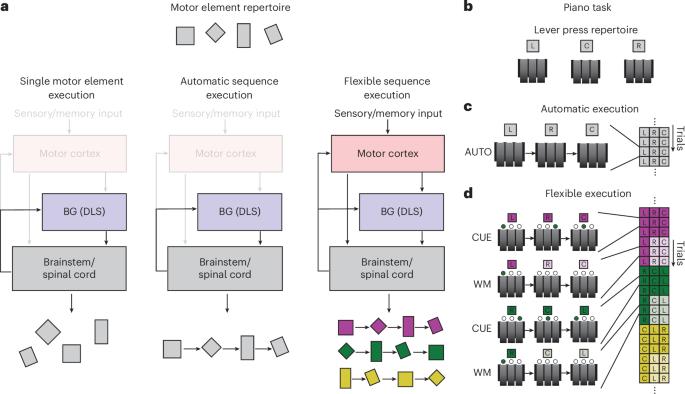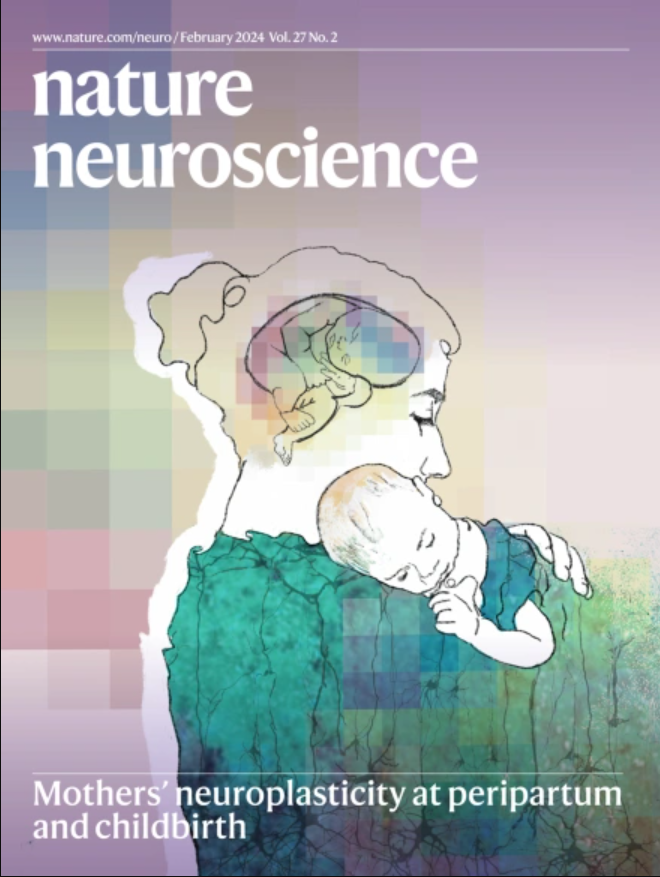运动皮层在运动序列执行中的作用取决于对灵活性的要求
IF 21.2
1区 医学
Q1 NEUROSCIENCES
引用次数: 0
摘要
关于运动皮层在执行运动序列中的作用存在广泛争议,不同的研究支持不同的观点。在这里,我们探究了运动皮层的参与程度取决于任务需求,特别是在高度练习或 "自动 "序列与根据外部提示灵活执行序列时,运动皮层的作用是否有所不同。为了测试这一点,我们通过对大鼠进行单一序列的过度训练或让它们跟随有指导性的视觉线索来训练它们产生三元素运动序列。对运动皮层进行切除的结果表明,对于灵活的线索驱动运动序列来说,运动皮层是必要的,但对于孤立训练的单一自动行为来说,运动皮层则是可有可无的。然而,当自动运动序列与灵活任务同时进行练习时,它变得依赖于运动皮层,这表明当自动运动序列也在灵活情境下产生时,皮层下无法巩固该序列。一个简单的神经网络模型重现了这些结果,并提供了电路层面的解释。我们的研究结果严格界定了运动皮层在运动序列执行中的作用,描述了运动皮层参与的条件及其发挥的功能,从而调和了关于运动皮层在运动序列生成中作用的看似矛盾的观点。本文章由计算机程序翻译,如有差异,请以英文原文为准。


The role of motor cortex in motor sequence execution depends on demands for flexibility
The role of the motor cortex in executing motor sequences is widely debated, with studies supporting disparate views. Here we probe the degree to which the motor cortex’s engagement depends on task demands, specifically whether its role differs for highly practiced, or ‘automatic’, sequences versus flexible sequences informed by external cues. To test this, we trained rats to generate three-element motor sequences either by overtraining them on a single sequence or by having them follow instructive visual cues. Lesioning motor cortex showed that it is necessary for flexible cue-driven motor sequences but dispensable for single automatic behaviors trained in isolation. However, when an automatic motor sequence was practiced alongside the flexible task, it became motor cortex dependent, suggesting that an automatic motor sequence fails to consolidate subcortically when the same sequence is produced also in a flexible context. A simple neural network model recapitulated these results and offered a circuit-level explanation. Our results critically delineate the role of the motor cortex in motor sequence execution, describing the conditions under which it is engaged and the functions it fulfills, thus reconciling seemingly conflicting views about motor cortex’s role in motor sequence generation. Motor cortex is required for flexible motor sequences informed by sensory cues but not for single automatic sequences. However, training automatic sequences alongside flexible ones interferes with their subcortical consolidation.
求助全文
通过发布文献求助,成功后即可免费获取论文全文。
去求助
来源期刊

Nature neuroscience
医学-神经科学
CiteScore
38.60
自引率
1.20%
发文量
212
审稿时长
1 months
期刊介绍:
Nature Neuroscience, a multidisciplinary journal, publishes papers of the utmost quality and significance across all realms of neuroscience. The editors welcome contributions spanning molecular, cellular, systems, and cognitive neuroscience, along with psychophysics, computational modeling, and nervous system disorders. While no area is off-limits, studies offering fundamental insights into nervous system function receive priority.
The journal offers high visibility to both readers and authors, fostering interdisciplinary communication and accessibility to a broad audience. It maintains high standards of copy editing and production, rigorous peer review, rapid publication, and operates independently from academic societies and other vested interests.
In addition to primary research, Nature Neuroscience features news and views, reviews, editorials, commentaries, perspectives, book reviews, and correspondence, aiming to serve as the voice of the global neuroscience community.
 求助内容:
求助内容: 应助结果提醒方式:
应助结果提醒方式:


